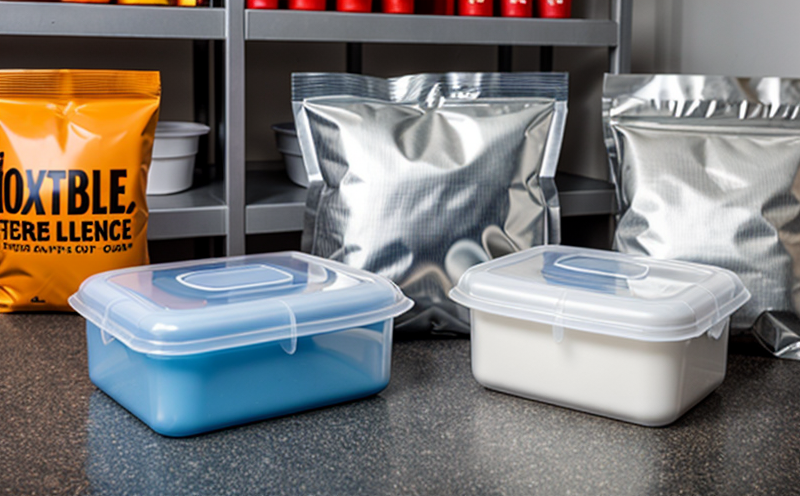ISO 14697 Shrinkage Measurement of Flexible Packaging
The ISO 14697 standard provides a comprehensive framework for the measurement and evaluation of shrinkage in flexible packaging materials. This service is designed to ensure that packaging meets stringent quality standards, enhancing both consumer safety and product integrity.
Shrinkage testing is critical in the packaging industry as it directly impacts the performance and shelf life of products within their respective packages. By accurately measuring shrinkage, manufacturers can identify potential issues early on and make necessary adjustments to formulations or manufacturing processes. This not only improves overall product quality but also helps companies comply with regulatory requirements.
The methodology outlined in ISO 14697 involves several key steps: selecting appropriate test specimens, preparing the samples according to specified guidelines, placing them into controlled environments that simulate real-world conditions (such as temperature and humidity), and then measuring any changes in dimensions over time. The results provide valuable insights into how flexible packaging behaves under various environmental stressors.
One of the primary advantages of adhering to this standard is its ability to ensure consistent performance across different batches or suppliers of materials. Additionally, compliance with ISO 14697 can help companies differentiate themselves in competitive markets by demonstrating their commitment to high-quality production practices.
For R&D engineers looking to innovate within the packaging sector, understanding these standards offers crucial guidance on developing new products that meet current and future needs. It also allows for better integration of sustainability initiatives into design cycles since many factors influencing shrinkage have direct ties to environmental impact metrics like energy consumption during manufacturing processes.
Quality managers responsible for overseeing supply chain operations will find value in this service as it helps maintain uniformity throughout the production line while ensuring adherence to international standards. Furthermore, by leveraging advanced analytical tools and techniques associated with ISO 14697 measurements, they can optimize resource allocation strategies leading towards more efficient use of raw materials and reduced waste generation.
Compliance officers play a vital role in navigating complex regulatory landscapes; therefore, familiarity with such internationally recognized benchmarks like ISO 14697 plays an essential part in ensuring ongoing adherence to legal requirements. They must stay updated on evolving trends within their respective industries so that they remain prepared for any changes or updates related to packaging specifications.
In summary, implementing ISO 14697 shrinkage measurement ensures robust testing procedures which contribute significantly towards maintaining consistent quality levels across all stages of product development and manufacturing cycles. This approach supports sustainable practices by promoting efficient utilization of resources while simultaneously enhancing consumer satisfaction through reliable performance expectations.
| Use Case | Description |
|---|---|
| Evaluating raw materials | Determining the inherent shrinkage properties before incorporation into final products. |
| Monitoring production processes | Identifying deviations in manufacturing techniques that could lead to excessive or insufficient shrinkage. |
| Quality control checks | Verifying compliance with specified tolerances during regular inspections at various stages of the supply chain. |
| Sustainability assessments | Evaluating impacts on environmental factors due to varying levels of shrinkage observed in different materials. |
Benefits
- Promotes consistent quality across multiple batches or suppliers of packaging materials.
- Ensures adherence to international standards, thereby enhancing credibility and trustworthiness among stakeholders.
- Supports sustainable practices by optimizing resource allocation strategies leading towards more efficient use of raw materials.
- Facilitates innovation within the R&D department through comprehensive understanding of industry best practices.
Competitive Advantage and Market Impact
- By demonstrating commitment to high-quality production methods, companies can differentiate themselves from competitors in terms of product reliability and durability.
- Compliance with ISO standards provides a competitive edge by reducing risks associated with non-compliance penalties or recalls due to faulty packaging.
- The ability to accurately measure shrinkage allows manufacturers to continuously improve their processes resulting in lower costs and higher profits.





